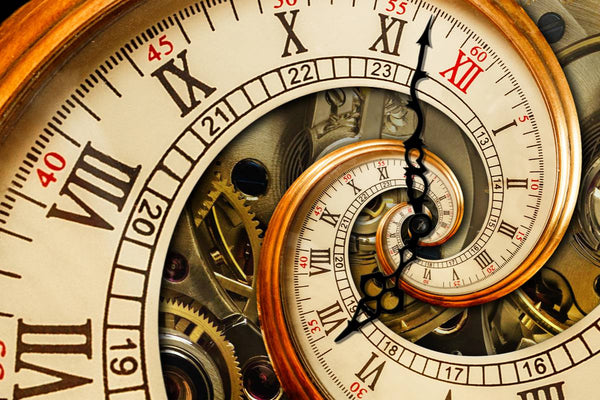World War I, which took place from 1914 to 1918
was a devastating conflict that involved many nations and had a major impact on 20th-century history. During this time, the pocket watch played a historic role as an essential tool for soldiers on the front lines, airmen, and sailors at sea. Beyond its practical function of measuring time, the pocket watch became a symbol of courage, determination, and usefulness during this tumultuous period in history.
The pocket watch during the First World War was much more than just an accessory. It was an indispensable tool for soldiers on the battlefield, allowing them to coordinate their movements, synchronize their attacks, and make strategic decisions. Pocket watches were used by soldiers to measure marching, patrolling, and attack times, as well as to synchronize artillery fire and troop movements.
World War I aviators, whether in the Air Force or the Navy
also depended on pocket watches for their flight operations. Pocket watches were used to measure flight time, calculate distances traveled, and coordinate air attacks. The accuracy of pocket watches was essential for pilots, as they had to perform complex, synchronized maneuvers with other aircraft to complete their missions.
Sailors also relied heavily on pocket watches during the war. Pocket watches were used to measure sailing time, coordinate naval maneuvers, and calculate positions at sea. Marine clocks, which were large pocket watches specially designed for use at sea, were also used to determine longitude and latitude, crucial information for navigation. The accuracy of pocket watches was vital to sailors, allowing them to accurately navigate the oceans, even in the harshest conditions.

Besides their usefulness, pocket watches were also items of sentimental value to soldiers during the war.
Many soldiers received pocket watches as gifts from loved ones before heading off to the front, and these watches were often engraved with personal messages or symbols of courage and support. Pocket watches thus became talismans for soldiers, bringing them a sense of comfort and connection to home during the difficult times of war.
Additionally, some high-ranking soldiers and officers were also associated with buckle watches, becoming a symbol of their status and bravery on the battlefield. Pocket watches were often worn with pride and were considered a sign of distinction among soldiers.
However, the pocket watch during the First World War was not only used by soldiers at the front. It was also used by civilians in countries at war to coordinate war efforts behind the lines. Public clocks were used to announce train schedules, air raids, and enemy attacks, allowing the population to make informed decisions and protect themselves accordingly. Clocks in train stations, factories, and offices were also synchronized with military clocks to maintain effective coordination throughout the country.
The First World War also marked a turning point in watchmaking technology.
Pocket watches had become more robust, water-resistant, and equipped with luminous dials to allow readability in all circumstances, even in the darkness of the trenches. Technological advances also allowed for the manufacture of more accurate and reliable pocket watches, with sophisticated mechanical movements.
Soldiers on the front lines were at risk of losing their pocket watches during combat or having them damaged by the harsh war conditions. Additionally, pocket watches were often targeted by thieves and looters, as they were considered valuables.
Despite these risks, the pocket watch played a crucial role during the First World War as an indispensable tool for soldiers, airmen, and sailors, as well as a symbol of courage, determination, and utility on the battlefield. It became an essential part of everyday life during the war for both military personnel and civilians, leaving an indelible mark on the history of this tumultuous period.
In conclusion, the pocket watch played a historic role during the First World War as an essential tool for soldiers, airmen, and sailors, as well as a symbol of courage and utility on the battlefield. It was used to coordinate movements, synchronize attacks, and make strategic decisions, and was associated with the bravery and status of soldiers. Despite the risks and challenges of war, the pocket watch survived as an iconic object of this period in history and continues to be valued for its historical role and symbolic significance.


